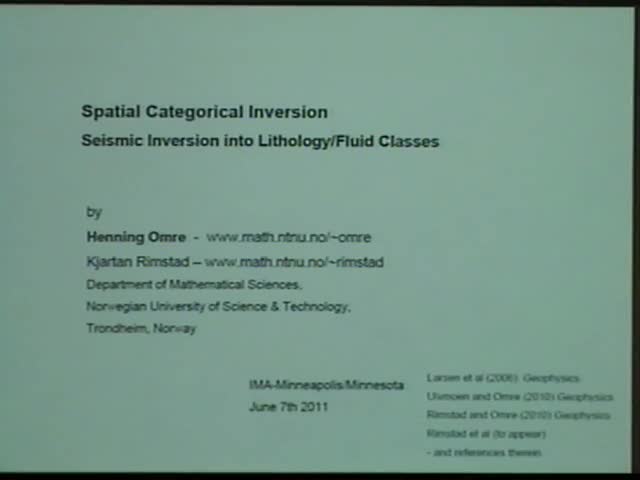Spatial categorical inversion: Seismic inversion into lithology/fluid classes
Presenter
June 7, 2011
Keywords:
- discrete variables
MSC:
- 46E39
Abstract
Modeling of discrete variables in a three-dimensional reference space is a challenging problem. Constraints on the model expressed as invalid local combinations and as indirect measurements of spatial averages add even more
complexity.
Evaluation of offshore petroleum reservoirs covering many square kilometers and buried at several kilometers depth contain problems of this type. Focus is on identification of hydrocarbon (gas or oil) pockets in the subsurface - these
appear as rare events. The reservoir is classified into lithology (rock)classes - shale and sandstone - and the latter contains fluids - either gas, oil or brine (salt water). It is known that these classes are vertically thin with large horizontal continuity. The reservoir is considered to be in equilibrium - hence fixed vertical sequences of fluids - gas/oil/brine - occur due to gravitational sorting. Seismic surveys covering the reservoir is made and through processing of the data, angle-dependent amplitudes of reflections are available. Moreover, a few wells are drilled through the reservoir and exact
observations of the reservoir properties are collected along the well trace.
The inversion is phrased in a hierarchical Bayesian inversion framework. The prior model, capturing the geometry and ordering of the classes, is of Markov random field type. A particular parametrization coined Profile Markov random field is defined. The likelihood model linking lithology/fluids and seismic data captures major characteristics of rock physics models and the wave equation. Several parameters in this likelihood model is considered to be stochastic and they are inferred from seismic data and observations along the well trace. The posterior model is explored by an extremely efficient McMC-algorithm.
The methodology is defined and demonstrated on observations from a real North Sea reservoir.
Co-author: Kjartan Rimstad, Department of Mathematical Sciences, NTNU, Trondheim, Norway
